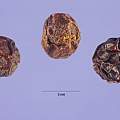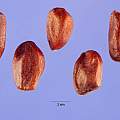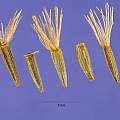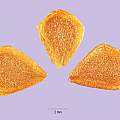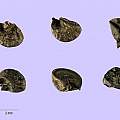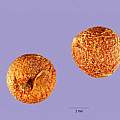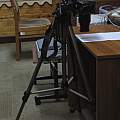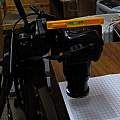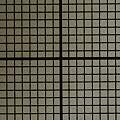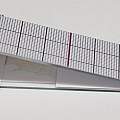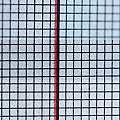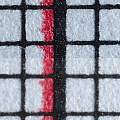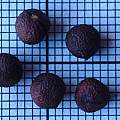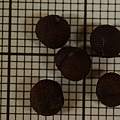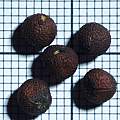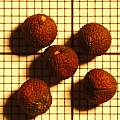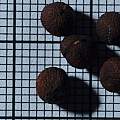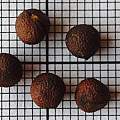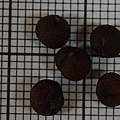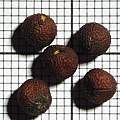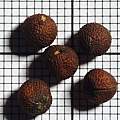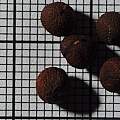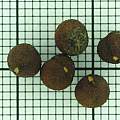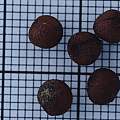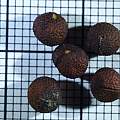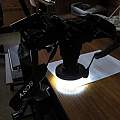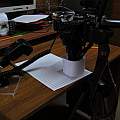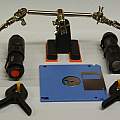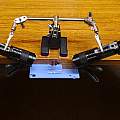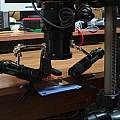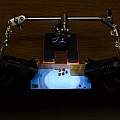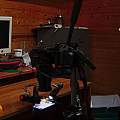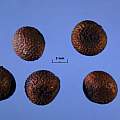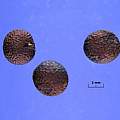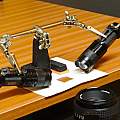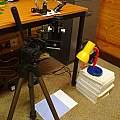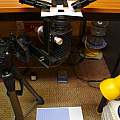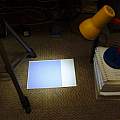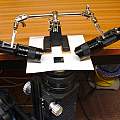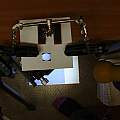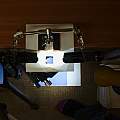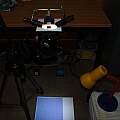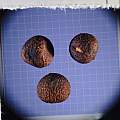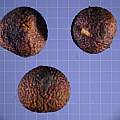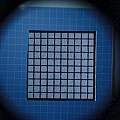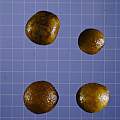By M. Gastil-Buhl and David Pilling.
In the era of DNA, according to the scientific community, classifying plants by their physical characteristics (morphology) is no longer the single best way. Despite this, if you want to grow a lily it is advantageous not to sow anything resembling a coconut. For gardeners seed photos can save a lot of time wasted tending plants grown from incorrectly identified seed.
The best seed photos we have found on the internet are those from the ARS Systematic Botany and Mycology Laboratory, a number of workers are credited including Steve Hurst, Tracey Slotta and Jose Hernandez. Some examples of their photographs of bulb seeds are shown below. You can see more by doing a Google image search for "site:plants.usda.gov ARS".
Positive points about these photos are that there are no shadows cast on the background, there is a lot of surface detail on the seeds visible, the seeds are large enough to see and there is high contrast with the background.
A digital SLR (DSLR) camera and a 1:1 macro lens is a level of equipment available to many people. Here 1:1 means that the object appears life size on the camera's image sensor, 1 pixel of sensor being occupied by 1 pixel area of object. The area that can be photographed is then the area of the sensor. A 35 mm film camera frame is 24 x 36 mm, most DSLR cameras are not full frame; a typical "APS" sensor size is 21.5 x 14.4 mm, one may expect 3000 pixels, giving a resolution of over 3000 dots per inch or 0.01 mm.
As a lens is focused the distance to objects that are in focus changes and as the distance from the lens to the object changes so does the magnification (the size of the image of the object on the sensor). By fixing the lens to object distance one fixes the magnification. This means that one can calibrate the system by taking pictures of an object of known size and then be able to say how big other objects are.
The next piece of equipment is a tripod. At 1:1 magnification few people can hold a camera steady enough; automatic image stabilization only works in the image plane; the small depth in focus means that stability is also needed in a perpendicular direction. The more robust and weighty the tripod the better.
Photo 1 shows the arrangement of DSLR with 50 mm macro lens set to 1:1 magnification. Note how close the end of the lens is to the target. Photo 2 shows a spirit level being used to ensure the camera is parallel to the plane being photographed. Photo 3 is of a 1 mm grid. (This can be downloaded from the section at the end of the page.) It was taken vertically at 1:1 magnification; the resulting image was 3878 x 2600 pixels, and can be seen to cover an area of 23 x 15.5 mm. From this the resolution may be calculated as 168 pixels per mm and used to set the scale on subsequent images. Note this value is camera specific, if you follow the technique below you will have to calibrate your own camera.
Depth of field, the amount of the subject that is in focus in a direction towards and away from the camera, presents a challenge. To understand this, an inclined grid was made as shown in photo 1 with a slope such that 4 mm of grid (left-right) corresponds to 1 mm of distance away from the camera; the closest point is on the left. Photo 2 combines three images taken with aperture f-stop values of f/2.8, f/8 and f/22 showing more depth is in focus the smaller the aperture (larger the f-stop). Photo 3 is an unscaled view of the border of the f/8 and f/22 images and it can be seen that at f/22 the image is not as sharp. This is a result of physics, a small aperture causes diffraction which blurs the image. It may be surprising that this fundamental limit has been reached by basic equipment. For a typical lens, image sharpness will peak around f/5 to f/8. For these photographs the camera was focused on the red line and flash was used. The conclusion is that photographing at f/8 will result in less than 2 mm depth being in focus.
The next set of photos show seeds of Alstroemeria magnifica under diffuse daylight, fluorescent room lighting, LED desk lamp, tungsten desk lamp and off camera flash. All are at 1:1 magnification using the grid and equipment above. These seeds are larger than the average bulb seed.
The colours are all different. To correct this problem the "white balance" needs to be adjusted; this is done by photographing something white under the same light as intended for the seed photographs, and using it to calibrate image processing software. This is done better if the photos are saved in the camera in raw format. The above five photos are now repeated after having their white balance corrected. Some cameras have built-in software for white balance correction.
Although the colours are now the same, the brightness varies. This is due to the exposure setting - how long the sensor is exposed to the light. Using raw format gives an opportunity to adjust this after the photo is taken but there are limits on how much it can be changed without degrading the image - there is no substitute for getting it right initially. A common problem with seed photos is "black dots on a white background" i.e. no visible surface detail on the seeds, the solution is to increase the exposure time.
The following photos show the same scene, taken using a 48 LED ring light, adding a diffuser to the off camera flash and using two LED lights angled close to horizontal from left and right. The diffuser is a simple ring of paper but notice how effective it is at removing shadows (compared with flash photo #5 in the previous set). White balance has not been corrected. The final two photos show the ring light and diffuser setups.
The conclusion we come to is that low angle light highlights surface detail well but produces unsightly shadows. To avoid shadows one could use a black background that absorbed all light. Another alternative is to use a background that is brighter than 100% white, achieved by lighting the background from behind. The way we choose is to use a transparent material to hold the seeds as no shadows will be cast on this. At some point there has to be a background; however, that background can be a considerable distance behind the transparent material so that shadows cast by light at any angle other than vertical will miss it.
Transparent material is freely available and everyone has an old CD case; however, plastic scratches easily and rubbing it clean produces a static electric charge that attracts more contamination. At high magnifications every scratch or dust particle will be visible. A simple solution is 1" x 3" glass microscope slides at a cost of a few pennies each.
The first photo shows the equipment used, two Q5 Cree LED torches, two spring clamps, a glass microscope slide, a piece of blue plastic (a floppy disc), and a pair of clamps on a stand (commonly known as a "helping hand"). Photos 2 and 3 show it assembled: The desk in the picture is 15 mm thick; the blue material is clamped to the bottom, and the slide sits on the top. The "helping hand" holds the two torches at an angle near horizontal. A lot of light is reflected by the slide; however, the shallow angle ensures it misses the camera lens. The 15 mm gap between the seeds, which are in focus, means the background will be out of focus. This is a good thing because imperfections or grain will be smoothed away by the bokeh of the lens. Photos 4 and 5 show the lights turned on, and photo 6 is the resulting seed photo.
There is no grid here to measure the seeds. The calibration photo of a grid taken above gave 168 pixels per mm as the scale for the camera used at 1:1 magnification. In the section at the end of this page there is a 2 mm graticule SVG file. Load this into a suitable program (e.g. the open source Inkscape), save as a bitmap of the correct size (336 pixels) and paste it into the seed photo.
By chance just enough light passes through and past the slide to illuminate the blue background. In a more sophisticated arrangement the background could be lit independently providing more control. The Cree torches are used on their low brightness setting, and the camera is in Manual mode with exposure time being adjusted to get best results. Partly this is necessary because the light from the torches is not continuous and so upsets the camera's metering.
The technique can be used with cheap compact cameras. For a Canon Powershot A810, costing about a tenth of the DSLR and macro lens, the scaling value was 99 pixels per mm and the resulting photo is shown below.
It would be nice to have a grid but adding one to the blue background material will not work because it is out of focus; adding an opaque grid to the transparent layer will result in shadows; any technique used for printing a grid will have to be precise because it will be viewed at high magnification. (Few printers exceed the 3000 dpi mentioned above.) One method is to replace the solid blue background material with a grid focused and reduced by a second lens onto the plane of the seeds. This second lens can be adjusted to get the grid in focus, whilst the camera lens is focused on the seeds.
In the implementation of this technique shown below, a 50 mm f1.7 lens was used. The blue grid was printed with an inkjet and positioned on the floor, around 730 mm below the slide with the seeds. An LED desk lamp was used to light the grid evenly. The printed grid has a spacing of 12.5 mm; however, the lens reduces this to the equivalent of 1 mm on the final image; similarly any printer artifacts are reduced to the point of being invisible. As the blue grid is being printed it can be scaled to the right size to give a 1 mm grid on the final photo; it could even be warped to correct for distortion in the lens.
The physical aperture of this lens allows an area of only 18 mm wide to be photographed. Since there is now a lot of reflective metal and glass just under the microscope slide, a piece of card with a hole cut can be used to block light coming from above. A bellows unit and a tripod were used to allow fine vertical movement of the lens, but any stable and precise mechanism could be used. The next to last photo shows a square cut from a paper mm grid to check that the background grid is correct.
Notes
- Arrangements with constant light sources can be tested for mechanical stability by photographing a grid and comparing the results to using flash (strobe). The 'mirror lock up' feature (a mechanism where the SLR mirror is moved and the system is given time to come to rest before the photo is taken) on some cameras may improve results. Lack of stability can be compensated for by using flash lighting for much shorter effective exposure time.
- It is easier to focus on a grid than a seed; by making 'targets' of various thicknesses with a square of grid on top, one can easily set the focus position for a seed of a given height.
- The macro photos attributed to David Pilling above were taken with a Sony Alpha 200 and Minolta f 2.8 50 mm lens.
- Using a magnification just short of the maximum may help by allowing a bit of room for adjusting focus.
Downloads
It is important to check the dimensions of grids after printing. Blue is defined as 100% B + 70% R + 70% G,
in sRGB space.
A4 1 mm black on white grid
A4 10 mm and 1 mm black on white grid
2 mm graticule
10 mm white on blue grid
12.5 mm white on blue grid
